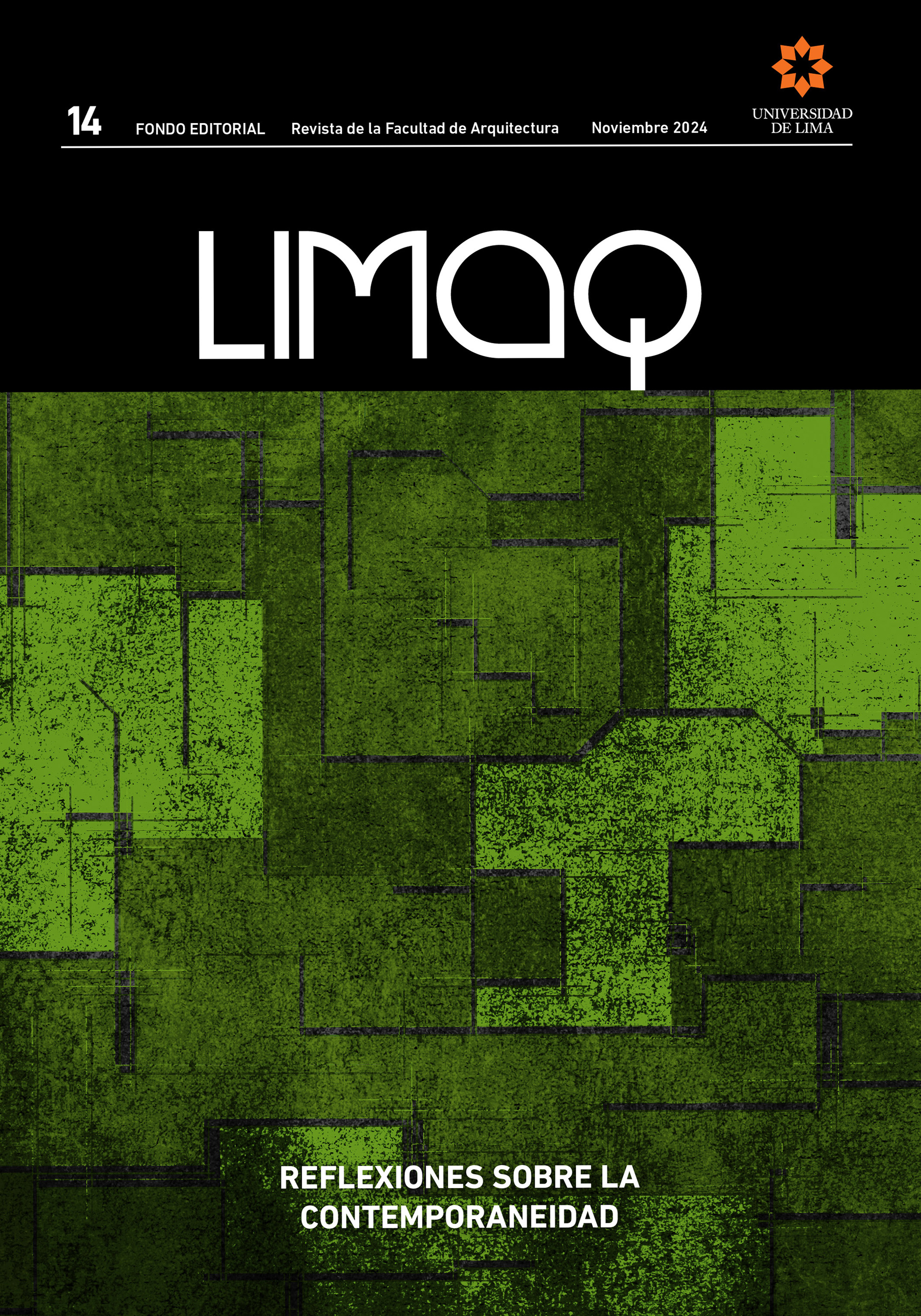The construction of rhetoric. An analysis of the discourses in Arkinka on weekend houses as a symbol of contemporary Peruvian architecture
DOI:
https://doi.org/10.26439/limaq2024.n14.6966Keywords:
contemporary Peruvian architecture, beach houses, architectural discourseAbstract
This article analyses the discourses developed by Peruvian architects during the first two decades of the 21st century, particularly, about what was known during those years as “contemporary Peruvian architecture”: the weekend houses to the south of Lima. As a methodology, this study is limited to projects published since the year 2000 in the Arkinka magazine, the most important specialized media outlet in the local field. The houses were tabulated, which allowed categorizing them according to certain aspects and discourses. From these groups, the discourses relating to architectural and landscape ideas are further analyzed to greater depth. The contribution sought to be generated by this research is to establish what the architectural discourse was in relation to the so-called “boom” of contemporary Peruvian architecture and how this has evolved in the current local architecture debate.
Downloads
References
Arkinka. (2004). Casas de playa (Año 9, No. 99, febrero).
Arkinka. (2008). Casas de playa (Año 12, No. 147, febrero).
Arkinka. (2009). Casas de playa (Año 13, No. 159, enero).
Arkinka. (2015). Casas de playa (Año 19, No. 231, febrero).
Artadi, J. (2012). El cubo en el desierto. Loft Publications.
Benavides, A., & Watmough, C. (2023). Arquitectura, paisaje y memoria. Arquitectura PUCP Publicaciones.
Cacciatore, F., & Foti, F. (2012). Segnali di vita tra due deserti. LetteraVentidue.
Casa en la playa Las Palmeras. Riofrío Arquitectos (2012, 4 de abril). Archilovers. https://archilovers.com/projects/53966/casa-en-la-playa-las-palmeras.html
Chicote, A. J. (2022). Continuidad y discontinuidad en Louis I. Kahn: material, estructura y espacio. [tesis doctoral, Universidad Politécnica de Madrid]. Archivo Digital UPM. https://doi.org/10.20868/upm.thesis.10639
Crousse, J. P. (2016). El paisaje peruano. Arquitectura PUCP Publicaciones.
Dam, P. (2004). La ocupación del desierto de la playa Asia, Lima, Perú. ARQ (Santiago), 57, 56-57. https://doi.org/10.4067/s0717-69962004005700014
Ludeña, W. (2004). Lima: con-cierto de-sierto barroco. ARQ (Santiago), 57, 10-13. https://dx.doi.org/10.4067/S0717-69962004005700003
Maderuelo, J. (2003). Aquello que llamamos paisaje. Visions de L’Escola Tècnica Superior D’Arquitectura de Barcelona, 2, 20-25. https://upcommons.upc.edu/bitstream/2099/10506/1/VISIONS2%2012%20teoria%20maderuelo2.pdf
Matta, R. (2007). “Asia” (Lima, Perú), barrios cerrados para vacaciones de lujo. L’Ordinaire des Amériques, 207, 139-159. https://doi.org/10.4000/orda.3366
Montestruque, O., & Asto, R. (2021). La invención del desierto. Arte y arquitectura desde la costa peruana. Proyecto, Progreso, Arquitectura, 25, 16-33.
More, V. (Ed.). (2009). El arquitecto y su obra. Universidad Ricardo Palma.
Nogué, J. (Ed.). (2008). El paisaje en la cultura contemporánea. Biblioteca Nueva.
Pérez Igualada, J. (2016). Arquitectura del paisaje. Forma y materia. Universidad Politécnica de Valencia.
Tschumi, B. (2005). Concepto, contexto, contenido. Arquine, Revista Internacional de Arquitectura y Diseño, 34. 1-5.
Soyer, E. (1992). Conversando con Emilio Soyer Nash. Columnata, 27-35.
Zeballos Velarde, C., & Ríos Vizcarra, G. (2021). Arquitectura y paisaje sacro. Universidad Católica San Pablo.
Zimmer, J. (2008). La dimensión ética de la estética del paisaje. En J. Nogué (Ed.), El paisaje en la cultura contemporánea (pp. 27-44). Biblioteca Nueva.



